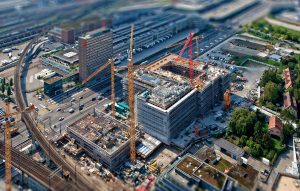Concrete is known for its strength and durability, making it a popular building material for many construction projects. However, concrete can develop a severe issue known as "concrete cancer" that can compromise the integrity of the structure. In this blog post, we will discuss what concrete cancer is, the causes, symptoms, and prevention measures.

What is Concrete Cancer?
Concrete cancer is a term used to describe the deterioration of concrete due to the corrosion of its reinforcing steel. This corrosion causes the steel to expand, which in turn causes the concrete to crack, spall, and ultimately crumble. Concrete cancer can be a significant issue for buildings, bridges, and other concrete structures.
Causes of Concrete Cancer:
There are several causes of concrete cancer, including:
- Carbonation: When carbon dioxide penetrates the concrete, it reacts with the calcium hydroxide to create calcium carbonate, reducing the alkalinity of the concrete. The loss of alkalinity can lead to the corrosion of the reinforcing steel.
- Chloride attack: Chloride ions can penetrate the concrete and react with the reinforcing steel to cause corrosion.
- Poor construction practices: Poor workmanship, improper mixing, and inadequate curing can cause concrete to deteriorate prematurely.
Symptoms of Concrete Cancer:
Some of the most common symptoms of concrete cancer include:
- Cracks in the concrete.
- Rust stains on the surface of the concrete.
- Spalling and delamination of the concrete.
- Buckling or bulging of the concrete.
Prevention of Concrete Cancer:
Preventing concrete cancer requires proper construction practices, maintenance, and repair. Some of the most effective prevention measures include:
- Proper concrete mix design, ensuring adequate cover over the steel reinforcing, and the use of corrosion-resistant steel.
- Regular maintenance and inspection of the concrete structure, including cleaning, repair of cracks, and sealing the surface to prevent water penetration.
- The use of protective coatings to prevent the penetration of harmful substances such as water, carbon dioxide, and chloride ions.
Concrete cancer is a serious issue that can compromise the integrity of concrete structures. The causes of concrete cancer include carbonation, chloride attack, and poor construction practices. The symptoms of concrete cancer include cracks, rust stains, spalling, and delamination of the concrete. The prevention of concrete cancer involves proper construction practices, regular maintenance and inspection, and the use of protective coatings. It is essential to work with a qualified engineer and builder to ensure that your project meets all local building codes and regulations and to prevent the development of concrete cancer.
